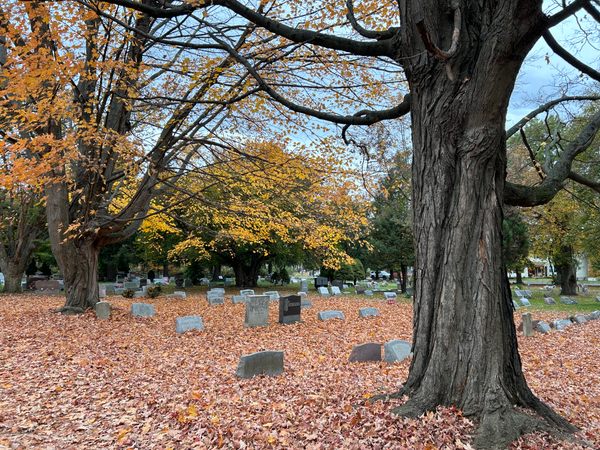Before it was Cherry Hill, the small hamlet of Colestown sprung up in southwestern New Jersey around the late 1600s. From there, the town quickly flourished and became home to a neighborhood of private homes, a large saw mill, two general stores, a blacksmith shop, a medicinal mineral water spring, and a popular hotel called The Fountain Tavern. While the area saw almost 200 years of leisure and livelihood, nothing remains of the once-bustling homestead often referred to as West Jersey’s “Deserted Village.” That is, except for Colestown Cemetery.
Colestown Cemetery is a burial ground located on the corner of North Kings Highway and Church Road, and it has been facilitating burials since the 17th century. Its stone gatehouse, constructed in 1858, was declared a landmark by the National Register of Historic Places in 1975. One side of this gatehouse was originally used for funeral services, while the other served as living quarters for the cemetery superintendent. A vault is hidden below the structure, once used as a winter holding room for bodies that could not be buried during frosts.
Cemetery founder Samuel Coles was laid to rest alongside his family here, their graves nestled among the many other centuries-old plots. Additional notable residents include state senator Alexander G. Cattell, state senator Francis F. Patterson Jr., former supreme court justice Charles G. Garrison, and John Stiles Collins, a Moorsetown farmer who kickstarted development of what is now Miami Beach, Florida.
Visitors today can explore non-denominational gravesites spanning 400 years of history, architecture, and thanatology. The cemetery is still active and equipped with contemporary mausoleums, marble vaults, and a cremation garden. A local (and cemetery staff approved) geocaching spot is also hidden among the graves.



